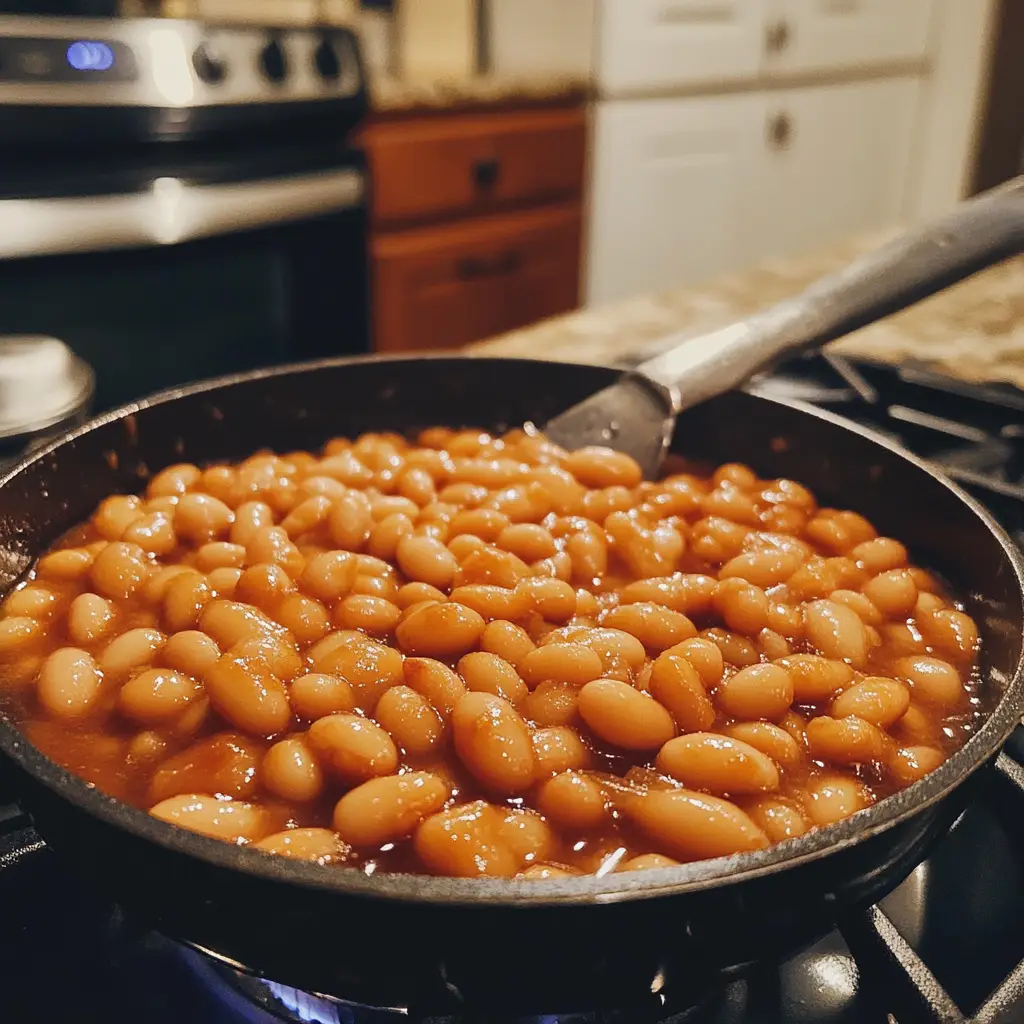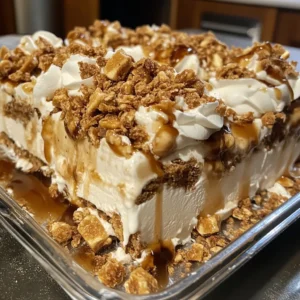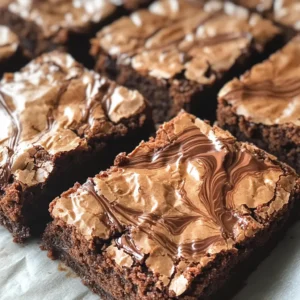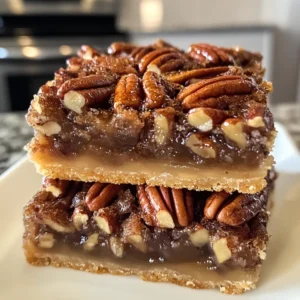Introduction to Baked Beans
Ah, baked beans! Just the thought of them brings back memories of summer barbecues and cozy family dinners. I remember the first time I tried homemade baked beans. It was at my grandmother’s house, where the aroma of sweet and savory flavors danced through the air. She would always say, “A good pot of baked beans can warm the heart and fill the belly.” And she was right!
Baked beans have a rich history that dates back centuries. Originally, they were a staple in Native American cuisine, often cooked with maple syrup and bear fat. Over time, they evolved into the beloved dish we know today, especially in American and British cultures. Whether served as a side dish at a picnic or as the star of a comforting meal, baked beans have a way of bringing people together.
What I love most about baked beans is their versatility. You can make them sweet, spicy, or even smoky, depending on your taste. Plus, they are incredibly easy to prepare! With just a few simple ingredients, you can create a dish that is not only delicious but also packed with protein and fiber. It’s like a warm hug in a bowl!
In this article, I’ll share my favorite baked beans recipe, along with tips and tricks that I’ve learned over the years. So, grab your apron, and let’s dive into the wonderful world of baked beans!
Ingredients for Baked Beans
When it comes to baked beans, the ingredients are simple yet essential. I always believe that using quality ingredients makes a world of difference in flavor. Here’s what you’ll need to create a pot of delicious baked beans that will have everyone asking for seconds!
Main Ingredients
- 2 cups dried navy beans (or any small white beans)
- 4 cups water (for soaking)
- 1 medium onion, finely chopped
- 1/2 cup brown sugar (light or dark, depending on your preference)
- 1/4 cup ketchup
- 2 tablespoons molasses
- 1 tablespoon Dijon mustard
- 1 teaspoon salt
- 1/2 teaspoon black pepper
- 1/2 teaspoon smoked paprika (for that lovely smoky flavor)
- 1/4 cup apple cider vinegar
For the beans, I always opt for dried navy beans. They’re small, creamy, and perfect for soaking up all the flavors. If you can, try to source organic beans; they tend to have a richer taste. And don’t forget to check the expiration date on your dried beans; fresh beans will cook better!
Optional Add-ons
- 1/2 cup cooked bacon or ham (for a meaty twist)
- 1 tablespoon Worcestershire sauce (for extra depth)
- 1/2 teaspoon cayenne pepper (if you like a kick)
- 1/4 cup chopped bell peppers (for a pop of color and flavor)
- Fresh herbs like thyme or rosemary (for a fragrant touch)
These optional ingredients can elevate your baked beans to a whole new level. I love adding bacon for that smoky richness, but if you’re looking for a vegetarian option, feel free to skip it! The beauty of baked beans is that you can customize them to suit your taste buds.
How to Prepare Baked Beans
Now that we have our ingredients ready, it’s time to roll up our sleeves and get cooking! Preparing baked beans is a delightful process that fills your kitchen with mouthwatering aromas. I find that each step is like a little adventure, leading to a comforting dish that warms the soul. Let’s dive into the steps!
Step 1: Soaking the Beans
First things first, we need to soak the beans. This step is crucial as it helps to soften the beans and reduces cooking time. I usually soak my beans overnight, but if you’re short on time, a quick soak works too!
Tips for Soaking Beans
- For an overnight soak, place the beans in a large bowl and cover them with water. Make sure the water is about two inches above the beans, as they will expand.
- If you’re in a hurry, you can do a quick soak. Just bring the beans and water to a boil for 2 minutes, then remove from heat and let them sit for an hour.
- Don’t forget to rinse the beans after soaking! This helps remove any impurities and makes for a cleaner taste.
Step 2: Cooking the Beans
Once the beans are soaked and rinsed, it’s time to cook them. I love this part because the beans start to transform into something magical! You’ll want to simmer them until they’re tender but not mushy.
Tips for Cooking Beans
- In a large pot, add the soaked beans and cover them with fresh water. Bring to a boil, then reduce the heat to a gentle simmer.
- Cook the beans for about 45 minutes to an hour, checking occasionally. You want them to be tender but still hold their shape.
- If you want to add flavor, toss in a bay leaf or some garlic while cooking. It adds a lovely depth to the beans!
Step 3: Preparing the Sauce
While the beans are cooking, let’s whip up the sauce! This is where the magic happens, and your kitchen will start to smell heavenly. The combination of sweet and tangy flavors is what makes baked beans so irresistible.
Tips for Sauce Preparation
- In a separate bowl, mix together the brown sugar, ketchup, molasses, Dijon mustard, salt, black pepper, smoked paprika, and apple cider vinegar. Stir until well combined.
- Taste the sauce! Adjust the sweetness or tanginess to your liking. Sometimes, I add a splash more vinegar for an extra zing.
- If you’re using any optional add-ons like bacon or Worcestershire sauce, mix them in now for a richer flavor.
Step 4: Combining and Baking
Now comes the fun part—combining everything and letting it bake! This is where the flavors meld together, creating a dish that’s simply divine.
Tips for Baking
- Preheat your oven to 350°F (175°C). While it’s heating, combine the cooked beans and sauce in a large baking dish. Stir well to coat the beans evenly.
- If you like a crispy top, sprinkle a little extra brown sugar on top before baking. It caramelizes beautifully!
- Bake uncovered for about 30-40 minutes, or until the sauce is bubbly and thickened. Keep an eye on it to prevent burning.
And there you have it! Your baked beans are ready to be enjoyed. The anticipation builds as you wait for them to cool just a bit before serving. Trust me, the wait is worth it!
Equipment Needed for Baked Beans
Before we dive into the delicious world of baked beans, let’s make sure we have the right tools at our disposal. Having the right equipment can make the cooking process smoother and more enjoyable. Here’s what you’ll need:
- Large Bowl: This is essential for soaking the beans. A big bowl allows the beans to expand comfortably.
- Large Pot: You’ll need a sturdy pot for cooking the beans. A heavy-bottomed pot works best to prevent sticking and burning.
- Baking Dish: A 2-quart or larger baking dish is perfect for combining the beans and sauce. If you don’t have one, a casserole dish will do just fine!
- Measuring Cups and Spoons: Accurate measurements are key to achieving the perfect flavor balance. I always keep my measuring tools handy!
- Wooden Spoon: This is great for stirring the beans and sauce together. Plus, it adds a rustic touch to the cooking experience.
- Colander: You’ll need this for rinsing the soaked beans. It’s a simple tool, but it makes a big difference!
If you find yourself without any of these items, don’t fret! You can often improvise. For example, a large pot can double as a mixing bowl, and a regular dish can work as a baking dish. Cooking is all about creativity, after all!
Variations of Baked Beans
Baked beans are like a blank canvas, just waiting for your creative touch! Over the years, I’ve experimented with different flavors and ingredients, and I’ve discovered some delightful variations that I can’t wait to share with you. Each twist brings a unique flair to this classic dish, making it even more exciting to serve at gatherings or enjoy on a cozy night in.
- Maple Bacon Baked Beans: For a sweet and savory experience, add crispy bacon and a splash of maple syrup. The combination of flavors is simply irresistible!
- Spicy Chipotle Baked Beans: If you love a little heat, toss in some chipotle peppers in adobo sauce. It adds a smoky kick that will have your taste buds dancing.
- Vegetarian Mediterranean Baked Beans: Swap out the traditional sauce for a mix of olive oil, garlic, and sun-dried tomatoes. Add some feta cheese and fresh herbs for a Mediterranean twist.
- BBQ Baked Beans: Use your favorite barbecue sauce instead of ketchup for a tangy, smoky flavor. This variation pairs perfectly with grilled meats!
- Sweet and Sour Baked Beans: Mix in some pineapple chunks and a splash of soy sauce for a tropical twist that’s both sweet and tangy.
These variations are just the tip of the iceberg! Feel free to mix and match ingredients based on what you have on hand or what flavors you love. The beauty of baked beans is that they can adapt to your culinary whims, making every batch a new adventure. So, don’t be afraid to get creative and make this dish your own!
Cooking Notes for Baked Beans
As I’ve journeyed through the world of baked beans, I’ve picked up a few cooking notes that can make your experience even better. These little tips can help you avoid common pitfalls and ensure your baked beans turn out perfectly every time!
- Bean Quality: Always choose high-quality dried beans. Old beans can take longer to cook and may not soften properly. Fresh beans are your best bet for that creamy texture!
- Flavor Development: The longer you let the beans sit after baking, the more the flavors meld together. If you can, make them a day ahead and reheat them before serving. They taste even better!
- Adjusting Consistency: If your baked beans are too thick, add a splash of water or broth while baking. If they’re too runny, let them bake uncovered for a bit longer to thicken up.
- Storage: Leftover baked beans can be stored in an airtight container in the fridge for up to a week. They also freeze well, so don’t hesitate to make a big batch!
- Experiment with Spices: Don’t be afraid to play with spices! A pinch of cinnamon or a dash of cayenne can add a surprising depth of flavor that elevates your dish.
These cooking notes are like little nuggets of wisdom I’ve gathered over the years. They help me create baked beans that are not just good but truly unforgettable. So, keep these tips in mind as you embark on your own baked bean adventure!
Serving Suggestions for Baked Beans
Now that your baked beans are bubbling and ready to go, it’s time to think about how to serve them! I love to present my baked beans in a way that makes them shine on the table. Here are some of my favorite serving suggestions that will have everyone coming back for more:
- Classic BBQ Plate: Serve your baked beans alongside grilled meats like ribs or chicken. The smoky flavors complement each other beautifully, creating a feast for the senses!
- On Toast: For a hearty breakfast or brunch, spoon baked beans over toasted bread. Add a poached egg on top for a delicious twist!
- With Cornbread: There’s nothing quite like pairing baked beans with warm, buttery cornbread. The sweetness of the cornbread balances the savory beans perfectly.
- As a Side Dish: Baked beans make a fantastic side for picnics or potlucks. They’re easy to transport and always a crowd-pleaser!
- Garnished with Fresh Herbs: A sprinkle of chopped parsley or cilantro on top adds a pop of color and freshness. It’s a simple touch that elevates the dish!
These serving suggestions are just a starting point. Feel free to get creative and pair your baked beans with whatever you love! The beauty of this dish is its versatility, making it a delightful addition to any meal.
Tips for Perfect Baked Beans
As I’ve spent countless hours perfecting my baked beans recipe, I’ve gathered a treasure trove of tips that can help you achieve that perfect pot every time. These little nuggets of wisdom can make all the difference, turning a good dish into a great one!
- Don’t Rush the Soaking: Soaking beans is essential for tenderness. If you can, soak them overnight. It’s like giving them a spa day before the big cook-off!
- Season as You Go: Layering flavors is key. Season the beans while cooking, and don’t forget to taste the sauce before combining. Adjusting flavors early on can lead to a more balanced dish.
- Use Fresh Ingredients: Fresh herbs and spices can elevate your baked beans. I always opt for fresh garlic and onions when possible. They add a vibrant flavor that dried versions just can’t match!
- Experiment with Sweetness: Everyone has their own preference for sweetness. Start with the recommended amount of brown sugar, but feel free to adjust based on your taste. A little extra can go a long way!
- Let Them Rest: If you can, let your baked beans sit for a bit after baking. This resting time allows the flavors to meld together, making each bite even more delicious!
These tips are like little secrets I’ve learned along my culinary journey. They help me create baked beans that are not just tasty but truly memorable. So, keep these in mind as you embark on your own baked bean adventure, and watch as your dish transforms into something extraordinary!
Breakdown of Time for Baked Beans
When it comes to baked beans, timing is everything! I’ve learned that understanding the time commitment can help you plan your cooking adventure better. Here’s a quick breakdown of the time you’ll need to whip up this delicious dish:
- Prep Time: 15 minutes. This includes gathering your ingredients, soaking the beans, and preparing the sauce. It’s a great time to get your kitchen organized and ready for the fun ahead!
- Cooking Time: 1 hour. This is the time it takes to cook the soaked beans until they’re tender. You’ll also need about 30-40 minutes for baking, allowing the flavors to meld beautifully.
- Total Time: Approximately 2 hours. This includes both the prep and cooking times. If you soak the beans overnight, you can cut down on the active cooking time, making it even easier!
Knowing this time breakdown helps me plan my meals better, especially when I’m hosting friends or family. I often prepare the beans ahead of time, letting them sit overnight for even richer flavors. So, whether you’re making them for a casual dinner or a festive gathering, you’ll be ready to enjoy your baked beans in no time!
Nutritional Information for Baked Beans
As a passionate home cook, I always find it important to know what I’m putting on the table. Baked beans are not only delicious but also packed with nutrients that make them a wholesome choice. Here’s a quick look at the nutritional information for a typical serving of homemade baked beans:
- Calories: Approximately 200 calories per serving (1 cup)
- Protein: About 10 grams, making them a great source of plant-based protein
- Fiber: Roughly 6 grams, which is fantastic for digestion and keeping you full
- Fat: Around 1 gram (without added bacon or meat)
- Sodium: Approximately 400 mg, depending on the amount of salt and added ingredients
- Carbohydrates: About 35 grams, providing a good source of energy
These numbers can vary based on the specific ingredients you use, especially if you add optional ingredients like bacon or different sauces. I love that baked beans are not only comforting but also nutritious, making them a perfect addition to any meal. Plus, they’re a great way to sneak in some extra fiber and protein into your diet!
Frequently Asked Questions about Baked Beans
As I’ve shared my love for baked beans, I often get questions from fellow home cooks eager to dive into this delicious dish. It’s always exciting to see others interested in creating their own version of baked beans! Here are some of the most common questions I’ve encountered, along with my answers to help you on your culinary journey.
Can I use canned beans instead of dried beans?
Absolutely! If you’re short on time, canned beans are a great shortcut. Just make sure to rinse them well to remove excess sodium. You can skip the soaking and cooking steps, and go straight to preparing the sauce and baking. It’s a quick and easy way to enjoy baked beans!
How do I store leftover baked beans?
Leftover baked beans can be stored in an airtight container in the fridge for up to a week. They also freeze well! Just make sure to let them cool completely before transferring them to a freezer-safe container. When you’re ready to enjoy them again, simply reheat on the stove or in the microwave.
Can I make baked beans in a slow cooker?
Yes, you can! Using a slow cooker is a fantastic way to make baked beans. Just soak and cook the beans as usual, then combine them with the sauce in the slow cooker. Cook on low for 6-8 hours or on high for 3-4 hours. This method allows the flavors to meld beautifully while you go about your day!
What can I serve with baked beans?
Baked beans are incredibly versatile! They pair wonderfully with grilled meats, cornbread, or even on toast for breakfast. You can also serve them as a side dish at picnics or potlucks. The options are endless, so feel free to get creative!
Can I make baked beans vegetarian or vegan?
Definitely! To make baked beans vegetarian or vegan, simply skip the bacon or any meat products. You can enhance the flavor with smoked paprika or liquid smoke for that delicious smoky taste. The recipe is naturally plant-based, so it’s easy to adapt!
These FAQs are just a glimpse into the wonderful world of baked beans. I hope they help you feel more confident as you embark on your own baked bean adventure. Remember, cooking is all about experimenting and having fun, so don’t hesitate to make this dish your own!
Conclusion on Baked Beans
As I wrap up this delightful journey through the world of baked beans, I can’t help but feel a sense of warmth and nostalgia. Baked beans are more than just a dish; they are a celebration of flavors, memories, and togetherness. With their rich history and endless versatility, they can easily adapt to any occasion, whether it’s a summer barbecue or a cozy family dinner.
What I love most about baked beans is their ability to bring people together. They are a comfort food that warms the heart and fills the belly, making them a perfect addition to any meal. Plus, with the simple ingredients and easy preparation, anyone can create a pot of delicious baked beans that will impress family and friends alike.
So, whether you stick to the classic recipe or venture into exciting variations, I encourage you to embrace the magic of baked beans. They are not just a side dish; they are a canvas for your culinary creativity. I hope you enjoy making and sharing this dish as much as I do. Happy cooking!



